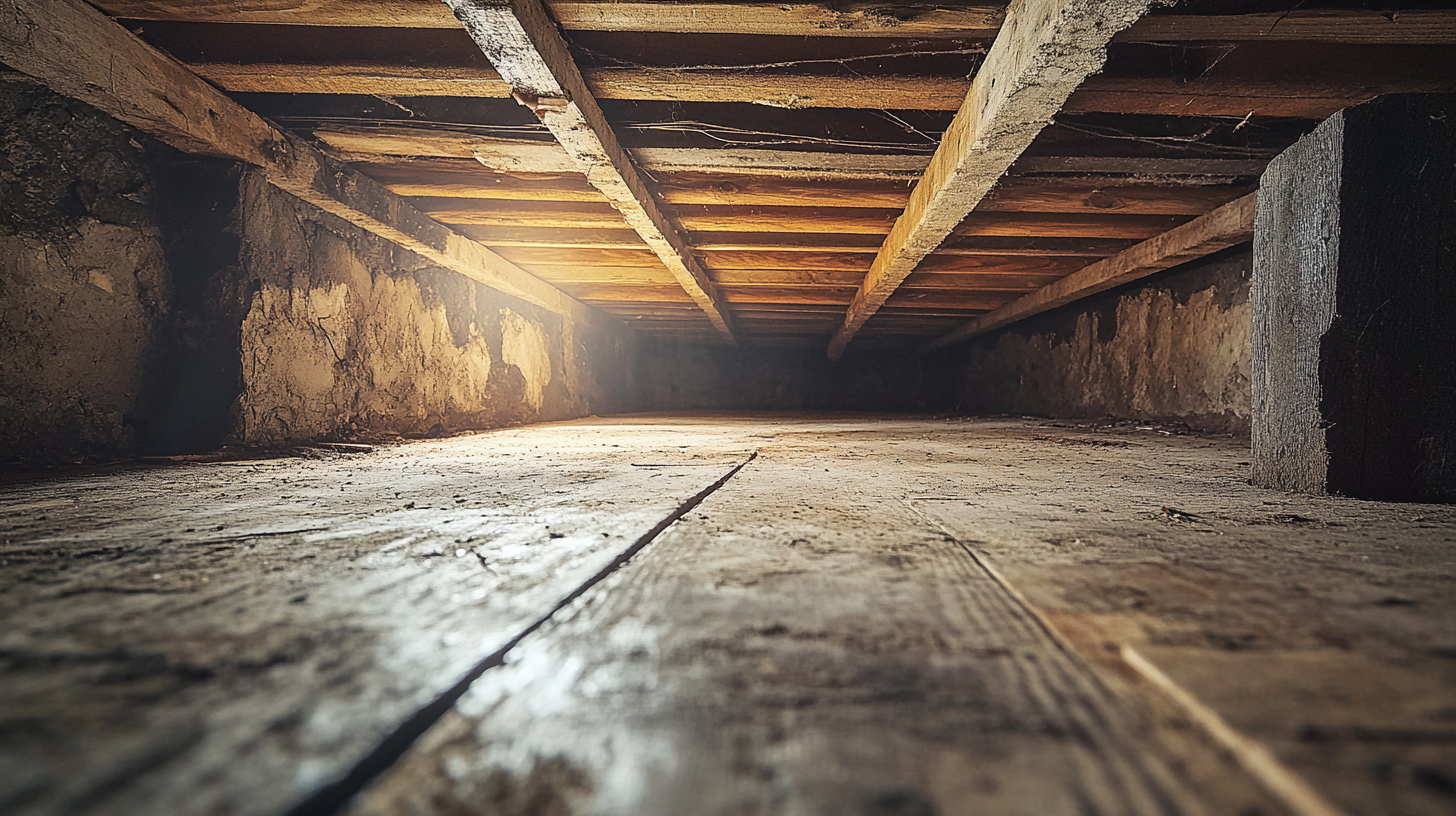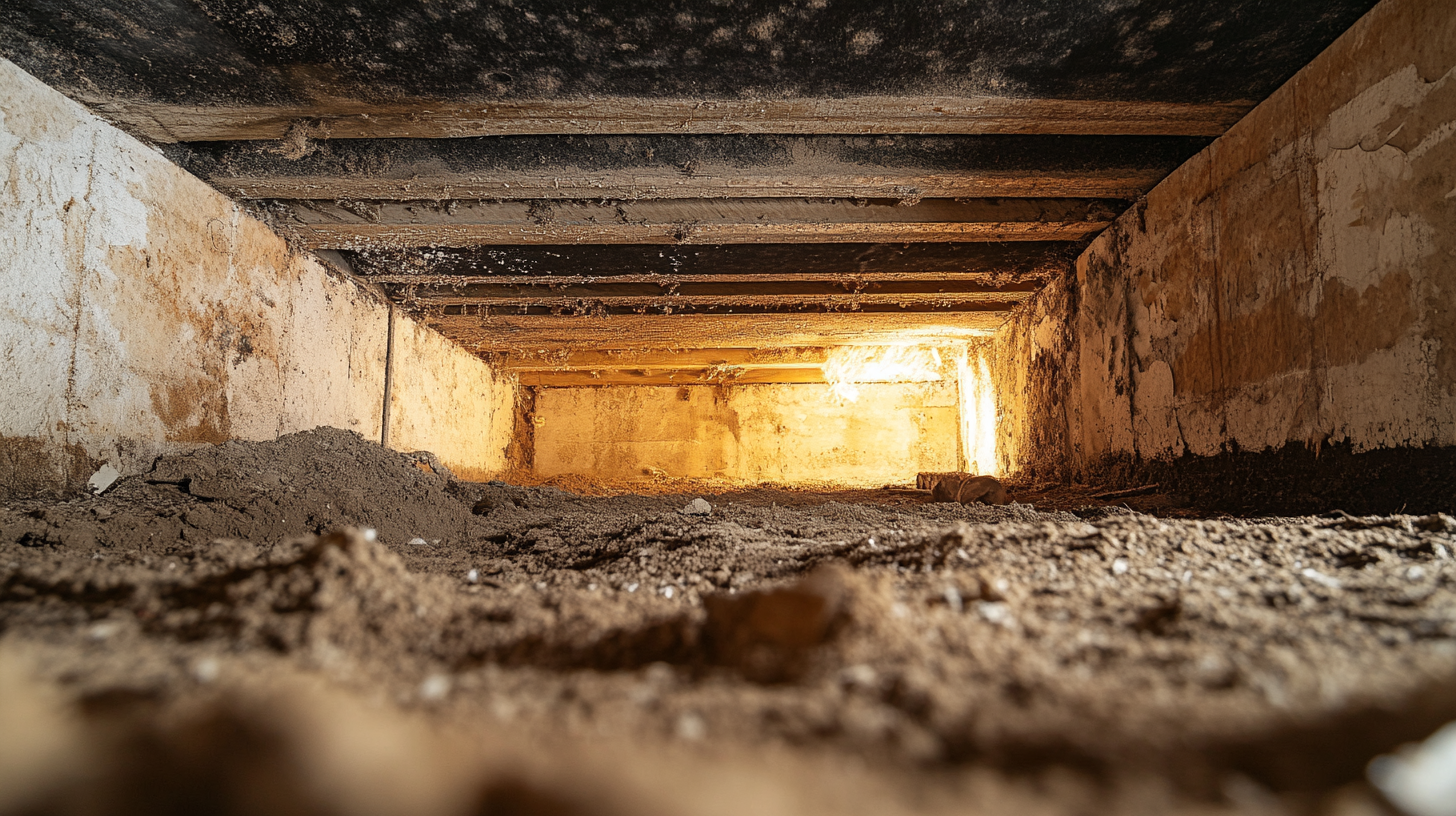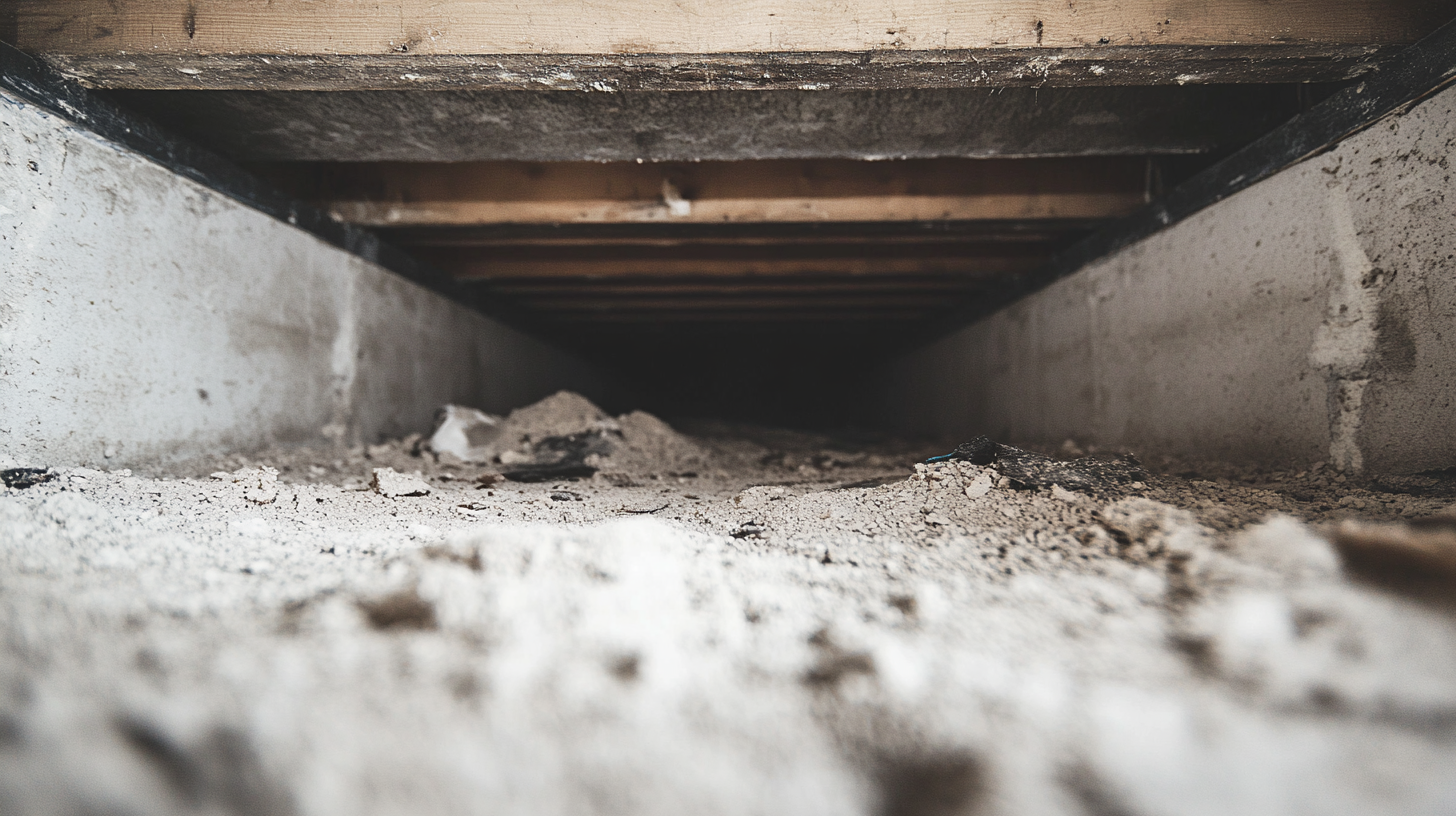Health Risks of Smoke Residue

Smoke residue, often an overlooked aftermath of fires, is a complex and persistent issue that can have far-reaching effects on both property and health. This blog aims to demystify what smoke residue is, delving into its common sources and composition, to provide a comprehensive understanding of its impact.
Smoke residue is the accumulation of unburned particles and gases that settle on surfaces after a fire. It's not just a simple byproduct; it's a mixture of various substances that can vary greatly depending on the source of the fire. Understanding the nature of smoke residue is crucial for effective cleaning and restoration, as well as for safeguarding health.
The sources of smoke residue are as varied as the materials that can burn. From residential fires involving wood, fabric, and plastics, to industrial accidents where chemicals and synthetic materials are involved, each source contributes to the unique makeup of the residue. This composition plays a key role in determining the appropriate methods for cleanup and restoration.
In the following sections, we will explore the intricacies of smoke residue, its common sources, and its composition. By understanding these elements, we can better grasp the challenges involved in dealing with smoke damage and the importance of thorough and professional cleanup.
Composition of Smoke Residue
Smoke residue is a complex mixture of various chemicals and particles, the composition of which can significantly affect the approach to cleaning and restoration. Understanding its chemical makeup and how it varies based on the source of the smoke is crucial for effective and safe smoke damage management.
Chemical Makeup of Smoke Residue
Detailed Breakdown of Common Chemicals Found in Smoke Residue:
- Carbon Compounds: Soot, a primary component of smoke residue, is primarily composed of carbon. This results from incomplete combustion of organic materials.
- Acidic Compounds: Smoke often contains acidic compounds like sulfur dioxide and hydrochloric acid, especially when plastics and synthetic materials are burned.
- Volatile Organic Compounds (VOCs): These compounds, which can include formaldehyde and benzene, are released when various materials burn. VOCs are known for their strong odors and potential health risks.
- Heavy Metals: In some cases, especially in industrial fires, smoke residue can contain heavy metals like lead and mercury.
- Particulate Matter: This includes microscopic particles that can penetrate deep into the lungs, posing serious health risks.
Variability Based on Source
How Different Sources of Smoke Affect Residue Composition:
- Wildfires: Smoke from wildfires typically contains a mix of organic compounds from burning vegetation, along with particulate matter and carbon dioxide. The presence of man-made materials in the fire can add more complex chemicals to the mix.
- Cigarettes: Cigarette smoke residue is known for containing nicotine and tar, along with a variety of other chemicals, including VOCs and carcinogens.
- House Fires: The composition of smoke residue from house fires varies greatly depending on the materials that burn. For example, burning synthetic materials and plastics will release different chemicals compared to wood or natural fibers. House fires often result in a complex mixture of soot, acidic compounds, and VOCs.
Short-Term Health Risks of Smoke Residue
Smoke residue, a common byproduct of fires, poses various short-term health risks, particularly affecting the respiratory system, skin, and eyes. Understanding these risks is crucial for anyone exposed to environments with smoke damage, as immediate and appropriate responses can mitigate health impacts.
Respiratory Issues
Exposure to smoke residue can have several adverse effects on the respiratory system, including:
- Irritation of the Lungs: Smoke residue contains a variety of irritants that can cause discomfort and inflammation in the lungs. This can lead to symptoms like coughing, wheezing, and shortness of breath.
- Aggravation of Existing Respiratory Conditions Like Asthma: For individuals with pre-existing respiratory conditions such as asthma or chronic bronchitis, exposure to smoke residue can exacerbate symptoms. It can trigger more frequent and severe asthma attacks and worsen the overall respiratory health.
Skin and Eye Irritation
Smoke residue can also affect the skin and eyes, leading to irritation and potential damage:
- Effects on Sensitive Skin: The chemicals in smoke residue can cause irritation and allergic reactions on sensitive skin. Symptoms may include redness, itching, and rashes.
- Potential for Eye Irritation and Damage: The eyes are particularly vulnerable to the irritants in smoke residue. Exposure can lead to redness, itching, and a burning sensation in the eyes. In severe cases, it can cause more serious damage to the eye surface.
Long-Term Health Risks of Smoke Residue
While the immediate effects of smoke residue are often visible and felt quickly, it's the long-term health risks that can be particularly concerning. Prolonged exposure to smoke residue can lead to chronic health issues, including respiratory conditions and an increased risk of cancer. Understanding these risks is crucial for anyone exposed to environments with long-standing smoke damage.
Chronic Respiratory Conditions
Long-term exposure to smoke residue can significantly impact lung health, with potential risks including:
- Long-Term Impact on Lung Health: Continuous exposure to the irritants and toxins in smoke residue can lead to a decline in lung function over time. This can manifest as persistent coughing, difficulty breathing, and reduced lung capacity.
- Risk of Developing Chronic Bronchitis or COPD: There is an increased risk of developing chronic respiratory diseases such as chronic bronchitis or Chronic Obstructive Pulmonary Disease (COPD). These conditions are characterized by long-term breathing difficulties and can significantly impact quality of life.
Carcinogenic Risks
The carcinogenic potential of smoke residue is a serious concern, especially with prolonged exposure:
- Potential Carcinogens in Smoke Residue: Smoke residue can contain carcinogenic compounds, such as polycyclic aromatic hydrocarbons (PAHs) and benzene. These compounds are known to increase the risk of cancer.
- Increased Risk of Cancer from Prolonged Exposure: Long-term exposure to these carcinogens can elevate the risk of developing various types of cancer, particularly lung cancer. The risk is higher in environments where smoke residue has settled and is not adequately cleaned.
Vulnerable Populations
Certain groups of people, such as children, the elderly, and individuals with pre-existing health conditions, are more vulnerable to the effects of smoke residue. Understanding the specific risks faced by these populations is crucial for ensuring their safety and well-being in environments affected by smoke damage.
Children and the Elderly
Children and elderly individuals face specific risks due to smoke residue:
Children:
- Developing Respiratory Systems: Children's respiratory systems are still developing, making them more susceptible to the harmful effects of smoke residue.
- Higher Breathing Rates: Children breathe at a faster rate than adults, increasing their exposure to airborne particles and toxins.
- Long-Term Health Impact: Early exposure to smoke residue can have long-term health implications, including increased risk of respiratory and cardiovascular diseases.
Elderly Individuals:
- Weakened Immune Systems: Many elderly individuals have weakened immune systems, making them more vulnerable to the toxins in smoke residue.
- Pre-existing Health Conditions: Elderly people often have pre-existing health conditions, such as heart or lung disease, which can be exacerbated by exposure to smoke residue.
- Mobility Issues: Mobility issues can make it difficult for elderly individuals to quickly evacuate from smoke-affected areas, leading to prolonged exposure.
Individuals with Pre-existing Health Conditions
Individuals with certain pre-existing health conditions are particularly susceptible to the effects of smoke residue:
- Respiratory Conditions: People with asthma, COPD, or other respiratory conditions are at a higher risk as smoke residue can trigger and exacerbate symptoms.
- Cardiovascular Conditions: Those with heart disease may experience worsened conditions due to the stress smoke residue places on the cardiovascular system.
- Allergies and Sensitivities: Individuals with allergies or chemical sensitivities may have severe reactions to the particles and chemicals in smoke residue.
Mitigating the Health Risks
Mitigating the health risks associated with smoke residue is crucial for maintaining a safe and healthy living environment. Effective cleaning and, in some cases, professional remediation are key steps in this process. This section provides tips and insights into managing smoke residue effectively.
Effective Cleaning and Removal of Residue
Tips and Techniques for Thorough Cleaning of Smoke Residue:
- Ventilation: Before starting the cleaning process, ensure proper ventilation to reduce the concentration of airborne particles. Open windows and use fans to circulate fresh air.
- Protective Gear: Wear gloves, masks, and protective clothing to avoid direct contact with harmful residues.
- Dry Soot Removal: Begin with dry cleaning methods like vacuuming with a HEPA filter to remove loose soot particles without smearing them.
- Use of Chemical Sponges: Chemical sponges are effective for cleaning soot from walls and ceilings without water, which can spread soot further.
- Cleaning Solutions: For washable surfaces, use a mild detergent or a solution specifically designed for soot removal. Be cautious with water on absorbent materials.
- Laundry for Fabrics: Washable fabrics should be laundered using detergents designed to remove smoke odors and residues.
- Air Purification: Consider using air purifiers with HEPA filters to capture any lingering airborne particles.
Professional Remediation Services
When to Consider Professional Help for Smoke Residue Removal:
- Extensive Damage: If the smoke damage is widespread or the affected area is large, professional services are more efficient and effective.
- Persistent Odors: Professionals have access to specialized equipment like ozone generators and thermal foggers that can eliminate stubborn odors.
- Health Concerns: If there are concerns about health risks, especially for vulnerable individuals, professional remediation ensures a thorough and safe cleanup.
- Specialized Materials: Certain materials, like upholstery or electronics, may require specialized cleaning methods that professionals can provide.
- Insurance Coverage: In many cases, insurance policies cover professional smoke damage remediation, making it a viable option for thorough restoration.
FAQs
Contact Fast Response Cleaning & Restoration Today!
Fast Response Cleaning & Restoration will do everything we can to ensure your experience with us is excellent.
Request A FREE Estimate
Request A FREE Estimate Form
CHECKOUT RECENT POST



Have an Emergency? We're Here to Help!
When it comes to disaster cleanup, we are a seasoned veteran in the industry and have helped hundreds of property owners just like you.
Our disaster recovery teams are available 24-7 to quickly clean up and repair disasters of all types.
